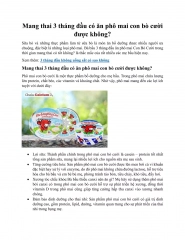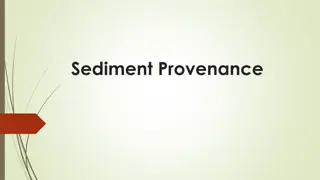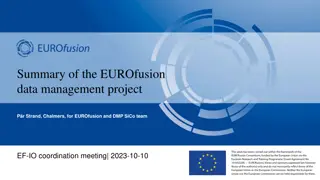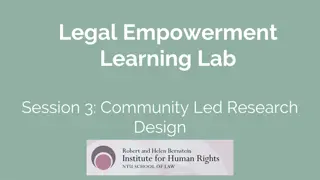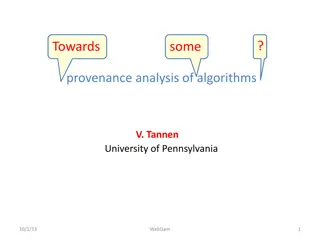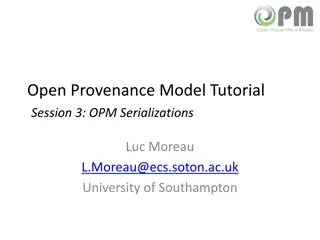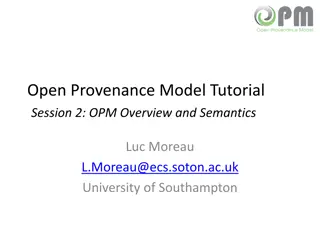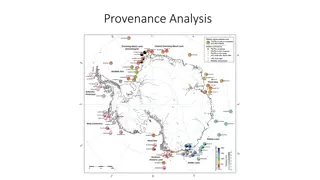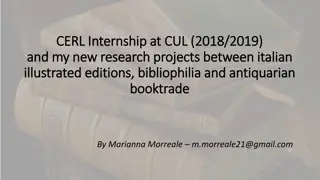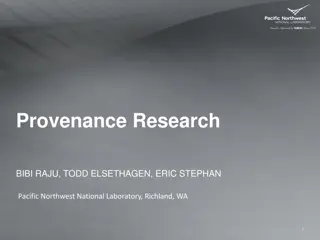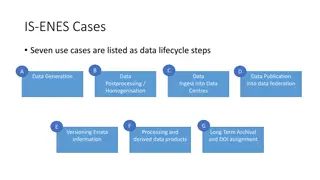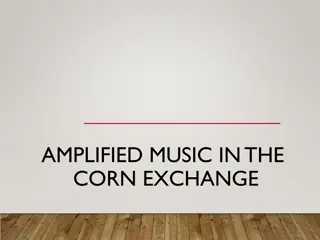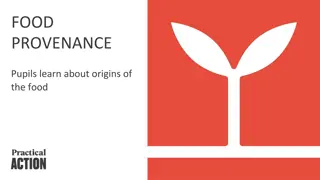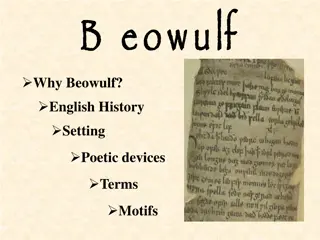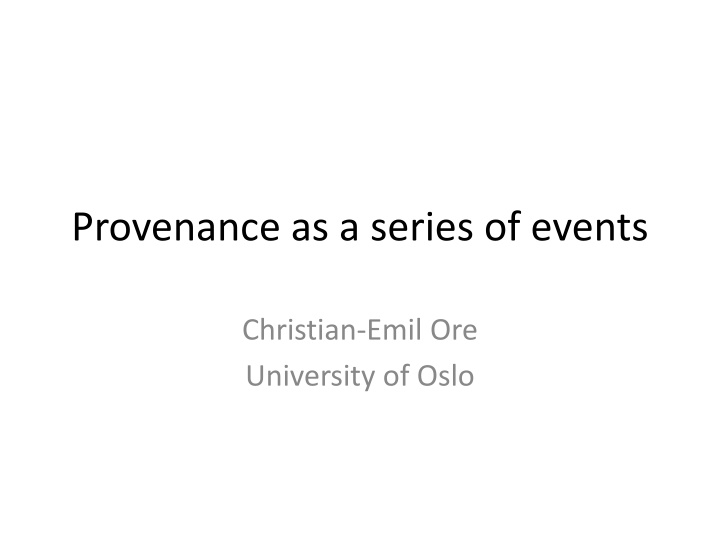
The Journey of Kringla Manuscript - History and Provenance
Explore the fascinating history and provenance of the Kringla manuscript, a collection of kings' sagas written in Iceland around 1225 by Snorri Sturluson. From its origins to its journey through different locations in Norway, Denmark, and Sweden, discover the intriguing story behind this valuable historical document.
Download Presentation

Please find below an Image/Link to download the presentation.
The content on the website is provided AS IS for your information and personal use only. It may not be sold, licensed, or shared on other websites without obtaining consent from the author. If you encounter any issues during the download, it is possible that the publisher has removed the file from their server.
You are allowed to download the files provided on this website for personal or commercial use, subject to the condition that they are used lawfully. All files are the property of their respective owners.
The content on the website is provided AS IS for your information and personal use only. It may not be sold, licensed, or shared on other websites without obtaining consent from the author.
E N D
Presentation Transcript
Provenance as a series of events Christian-Emil Ore University of Oslo
The history of a parchment folio The leaf from the Kringla manuscript European digital library record: Creator: Title: Library: Sturluson, Snorri Kringla leaf Landsb kasafn slands H sk lab kasafn Manuscript Department: Lbs fragment Manuscript History Shelfnumber: Document type: Subject:
Kringla provenance written A collection of kings' sagas written in Iceland around 1225 by the poet and historian Snorri Sturluson (1179 1242) 1260 the Kringla manuscript were written containing the sagas and other material. In the 16th c. the Kringla-manuscript was in Bergen, Norway Used along with other manuscripts by the priest Peder Clausson Friis in the first printed edition of Kringlaheimsins (1530) Around 1600 the Kringla-manuscript was moved to University Library in Copenhagen 1682-1687 The Icelandic J n Eggertsson (1643-89), a illicit trader in Medieval Icelandic manuscripts, copied the Kringla-manuscript for the Swedish king, removed a folio (Kringla leaf). The copy (Holm. Papp. 18 fol) together with the folio as a quality proof was sent to the Royal Library in Stockholm, Sweden. Around 1700 the Kringla-manuscript was sent to the Icelandic Tormod Torf us in Karm y, Norway and copied by his assistant sgeir J nsson. The copies are known as AM 35, AM36, AM63 and are used for all modern edition of the sagas. Beginning of 18thc. the Kringla-manuscript was returned to Copenhagen 1728 The Kringla manuscript was lost in the great fire of Copenhagen End 19thc. the Kringla leaf in the Royal Library, Stockholm was identified to be a part of Kringla manuscript 1975 the Kringla leaf was given to Iceland by the Swedish king Karl Gustav Now in the Icelandic National Library (Lbs. fragm. 82) as the only known remaining part of the Kringla manuscript.
Kringla provenance 1 P14 carried of by P94 has created E73 Information Object Content of the texts E65 Creation E21 Person Snorri Sturluson (1179 1242) Conception and writing E55 Type Velum, codex P128 carries P108 produced P7 Took place at E12 Production Writing, illumination binding, 1260 E84 Information Carrier Kringla manuscript E53 Place Iceland P2 has type P27 moved from P25 moved E9 Move E10 Transfer of Custody E8 Acquisition P26 moved to 1400 1500 E53 Place Bergen, Norway P7 took place at P12 was present at E65 Creation The printed edition1530 E21 Person Peder Clausson P14 carried of by E9 Move E10 Transfer of Custody E8 Acquisition P25 moved P27 moved from 1600 1650 E53 Place Copenhagen, Denmark P26 moved to
Kringla provenance 2 P108 produced P14 carried of by E84 Information Carrier E12 Production Event Copying of the Kringla , removal of a leaf 1680-1687 E21 Person J n Eggertsson (1643-89) Kringla leaf and the Holm. Papp. 18 fol. P7 took place at P31 has modified E53 Place Copenhagen, Denmark P27 moved from E9 Move E10 Transfer of Custody 1400 1500 E84 Information Carrier P25 moved E53 Place P26 moved to Kringla Manuscript Karm y, Norway P12 was present at P14 carried of by E84 Information Carrier E12 Production The copying of Kringla E21 Person sgeir J nsson P94 has created AM 35, AM 36, AM 63 1695 1705 P25 moved P27 moved from E9 Move E10 Transfer of Custody 1705 1728 P13 destroyed P26 moved to E5 Event E6 Destruction P10 falls within The Great fire in Copenhagen 1728
Kringla provenance 3 E53 Place Copenhagen, Denmark P27 moved from E9 Move E10 Transfer of Custody E84 Information Carrier P25 Moved Kringla leaf and the Holm. Papp. 18 fol. 1680-1687 P26 moved to E53 Place P46 forms part of Stockholm P25 Moved E9 Move E10 Transfer of Custody E8 Acquisition P27 moved from E84 Information Carrier E53 Place Kringla leaf 1975 Iceland P26 moved to P138 represents P62 depicts P94 has created P128 carries E65 Creation E36 Visual Item Image of the Kringla leaf E84 Information Carrier photographing Color slide P128 carries E84 Information Carrier Jpg file on a disk E12 Production digitization P94 has created
Summing up CIDOC CRM Coherently integrates information at varying degrees of detail Designed for mediation of cultural heritage information Enables story telling / provenance of cultural objects Supports all information categories suggested by ObjectID Formal ontology supports deduction systems e.g. investigation databases
Summing up Information integration View the contextual information as first class objects Add provenance to your database system Keep track of the events your object has been involved in Link your objects to accepted authorities vocabulars

